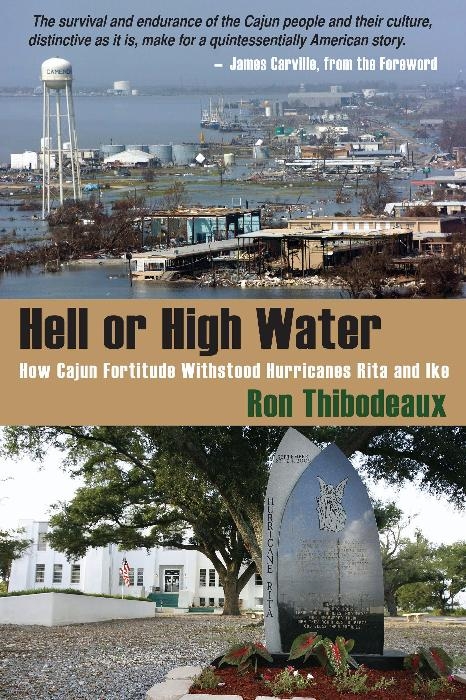Since a series of hurricanes cut an unprecedented path of death and destruction across Louisiana,
Union students and faculty have immersed themselves in the Cajun landscape.
Beginning in December 2005 and 2006 when volunteers spent part of their December break helping rebuild parts of New Orleans that were damaged or destroyed by hurricanes Katrina and Rita and continuing today with a mini-term that grew out of those experiences, Union’s presence in Louisiana remains strong.
The College’s relief efforts, which have received ample media attention over the years, are featured in a new book, Hell or High Water: How Cajun Fortitude Withstood Hurricanes Rita and Ike (University of Louisiana at Lafayette Press).Written by Ron Thibodeaux, a veteran reporter and editor at the New Orleans Times-Picayune, the book devotes nearly a full chapter to Union’s involvement.
“There have been church members, high school and college students on spring break, civic organizations, and others,” Thibodeaux writes of the out-of-town volunteers who have descended on the region to pitch in. “And no group’s experience at the end of the road has been more profound than that of Janet Grigsby’s students.”
Grigsby, a sociology lecturer, has led students to Louisiana each December for the mini-term, which combines community service with the academic study of New Orleans and the hurricane disasters.
While researching the volunteer aspect for his book, Thibodeaux heard about Union’s commitment. He intended to simply include a sentence or a paragraph about it.
“That changed, though, once I interviewed Dr. Grigsby,” Thibodeaux wrote in an email. “The more she told me about the mini-term and its impact on her students, the more I sensed that this program was unique in its approach, its outreach and its impact - and deserving of broader consideration.”
In the book, Grigsby shares with Thibodeaux the great value she felt in getting the students into communities affected by the disaster. In Dulac, for instance, they could get to know the people and how they lived instead of merely helping a construction crew rebuild a stranger’s home.
“After the hurricanes in 2005, the most that people got out of it was ‘the levees, the levees, the levees,’ and ‘why didn’t FEMA do what it was supposed to do’ and ‘why didn’t the Corps of Engineers build the levees right’ and ‘why are people living in there in the first place’ and ‘why the heck would people go back to live there,’’’ Grigsby told Thibodeaux. “That’s like: how superficial, such a biased and unproductive way to look at it.
“That’s almost the most important part of the course,” Grigsby said. “New Orleans is fine and they all think it’s cool to go to the Big Easy and all that stuff, but to really understand South Louisiana, you need to get out to the wetlands because the loss of the wetlands is so critical for New Orleans.”
The 212-page book also features several photographs of Union students in action, which Thibodeaux said “really help to convey both the nature of their recovery efforts and the high level of enthusiasm that they had for the work.”
A sad footnote for Thibodeaux, who has spent more than 30 years at the Times-Picayune: he is among the 200 employees who will lose their jobs when the daily newspaper shifts its focus to online news and publishes only three days a week beginning this fall.
This December will mark the eighth year that a group from Union heads to Louisiana. Interest in the mini-term remains strong, with nearly all the spots filled.
As Thibodeaux writes, “And every spring when she solicits applications for the class, Grigsby always says, “God willing and the storms don’t come again, we’re going back.”
Note: In December 2005, the Times Union in Albany sent a reporter and a photographer to New Orleans to chronicle the College’s first relief efforts.
